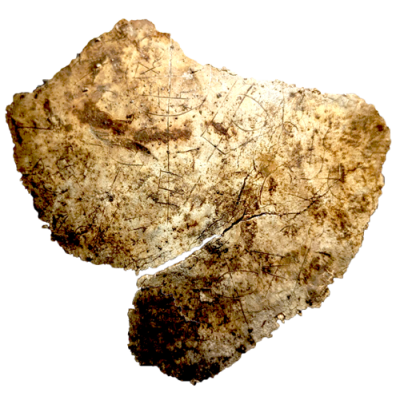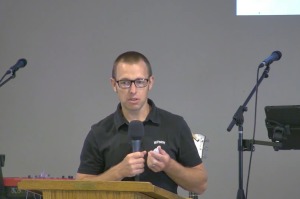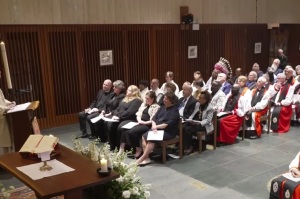1,400-y-o Christian cup uncovered in Britain 'important' to understanding early Christian church

Archaeologists have unearthed a unique 5th-century cup etched with symbols of early Christian iconography while excavating a ruined 6th-century church in Northumberland, northern England.
According to a statement from the Vindolanda Charitable Trust, the lead cup or chalice was recovered in 14 fragments from the Vindolanda Roman fort near Hadrian’s Wall, a 73-mile stone barrier constructed around 122 A.D. to identify the edge of the Roman Empire.
Though in poor condition, symbols identified on the cup include a chi-rho (or monogram said to represent Jesus Christ), a happy bishop, ships, a congregation, a fish, and a whale. Additionally, Latin, Greek and potentially Ogam — an early medieval script — letters appear alongside the drawings.
“The combination of so many of these etchings and the context of the discovery makes this artifact one of the most important of its type to come from early Christianity in Western Europe,” reads the statement. “It is the only surviving partial chalice from this period in Britain and the first such artifact to come from a fort on Hadrian’s Wall.”
Andrew Birley, director of Vindolanda excavations, told the Independent that the inscriptions may have conveyed Christian stories at a time when Bibles were difficult to acquire.
“So far, when we find etchings on stones in churches, or on mosaic floors, unless they are an integral part of the structure we have thought that they are ‘graffiti’ left by worshipers or the early Christian equivalent of Banksy — but this artifact changes the narrative quite a bit,” he said.
“The etchings are no random act, and a chalice is a holy Christian artifact. It is the only portable artifact from this period yet to have been found that is festooned with ‘graffiti’ or etchings. The symbols are a Christian code of sorts, mechanisms by which Christians could identify with and tell the stories to each other. Remember this is long before anything like the Bible would have been commonly available.”
Studying the chalice, he said, could help reveal “what was important to congregations almost 1,500 years ago and just after the fall of Roman Britain.”
The chalice is being examined by Dr. David Petts, a researcher in the Department of Archaeology at Durham University. He said the cup has the potential to “tell us much about the development of early Christianity in beginning of the medieval period.”
“This is a really exciting find from a poorly understood period in the history of Britain,” he said. “Its apparent connections with the early Christian church are incredibly important, and this curious vessel is unique in a British context.”
The excavation also discovered the foundations of a significant church of the 5th or 6th century, large enough for about 60 parishioners, according to The Guardian.
Through the church had collapsed, the chalice had been securely sealed under the rubble “perhaps in a ceremony marking the end of the church,” notes the outlet.
“Being able to prove you’ve got a church of the 5th or 6th century is hard unless you find associated material within it,” Birley said. “What’s really important about this chalice is that it is a definite Christian artifact. It helps us to reevaluate the other similar buildings on Hadrian’s Wall of the same period, which have similar features but don’t have artifacts preserved.”
Birley also told BBC News that finding “a chalice smothered in Christian symbols” offers an opportunity for increased understanding of Christianity’s spread across the region.
"Many potential church structures have been located from this period, but without the Christian artifacts to back that up, they could not be proven beyond doubt,” he said.
Prior discoveries at the fort included a board game and a scrap of leather cut into the shape of a mouse, according to The Smithsonian.




























